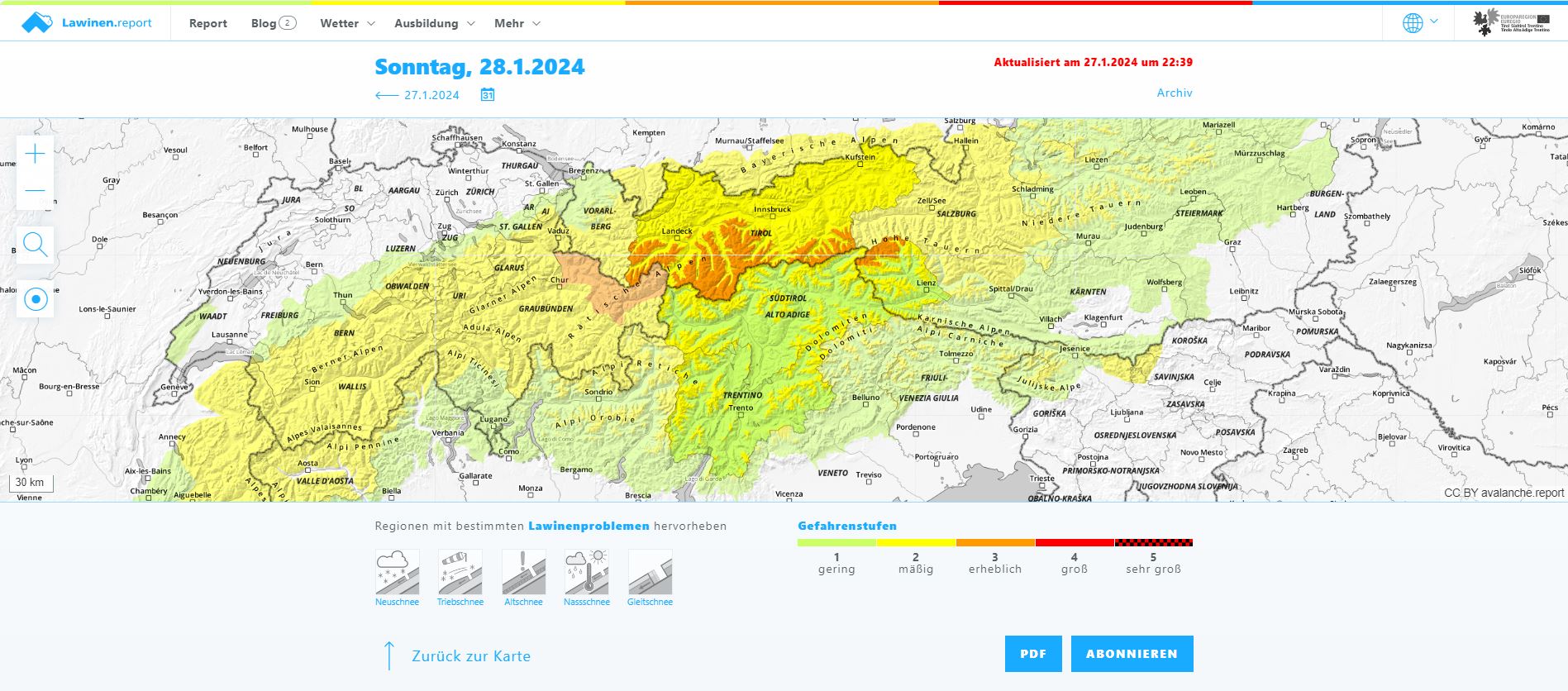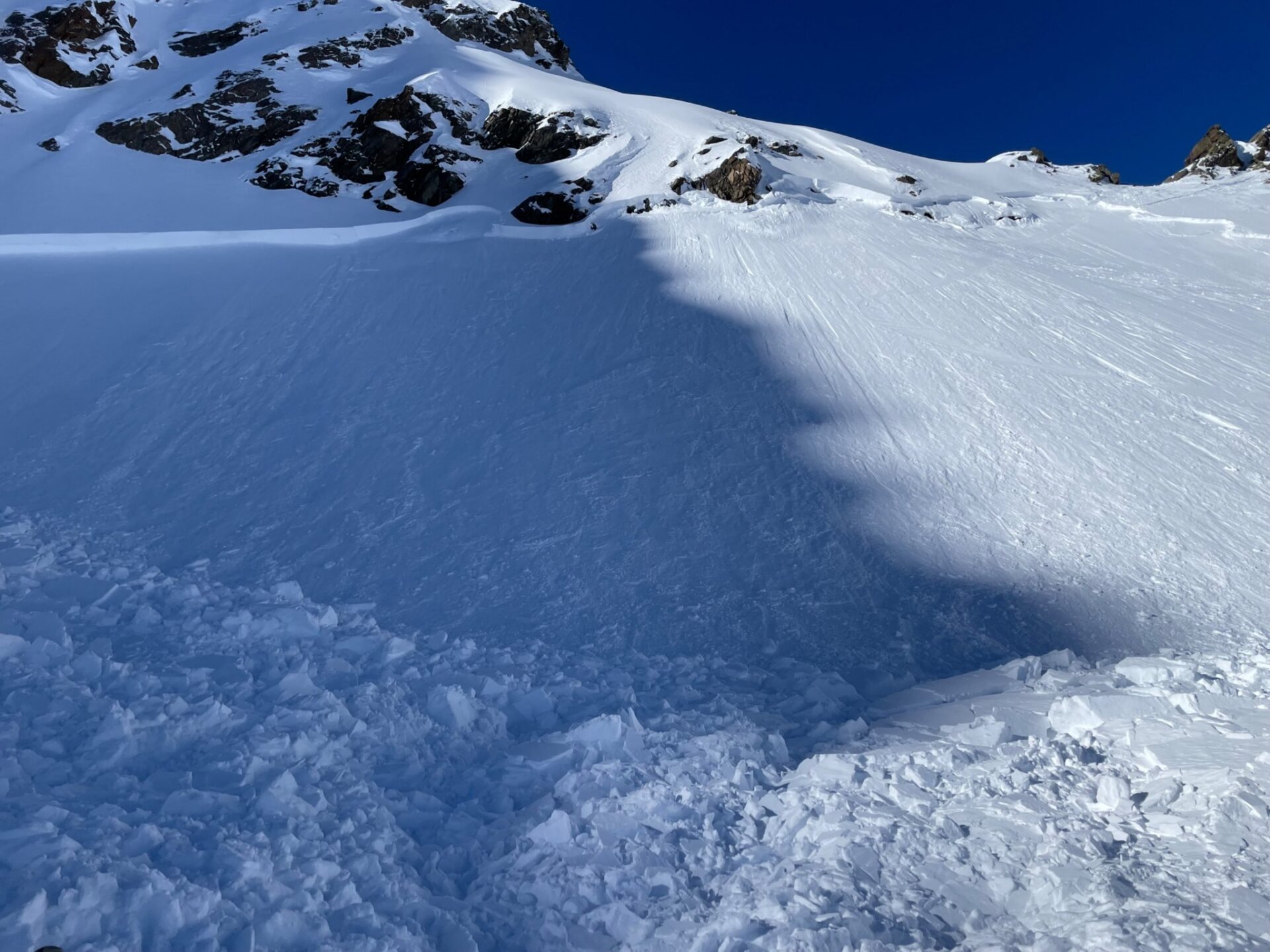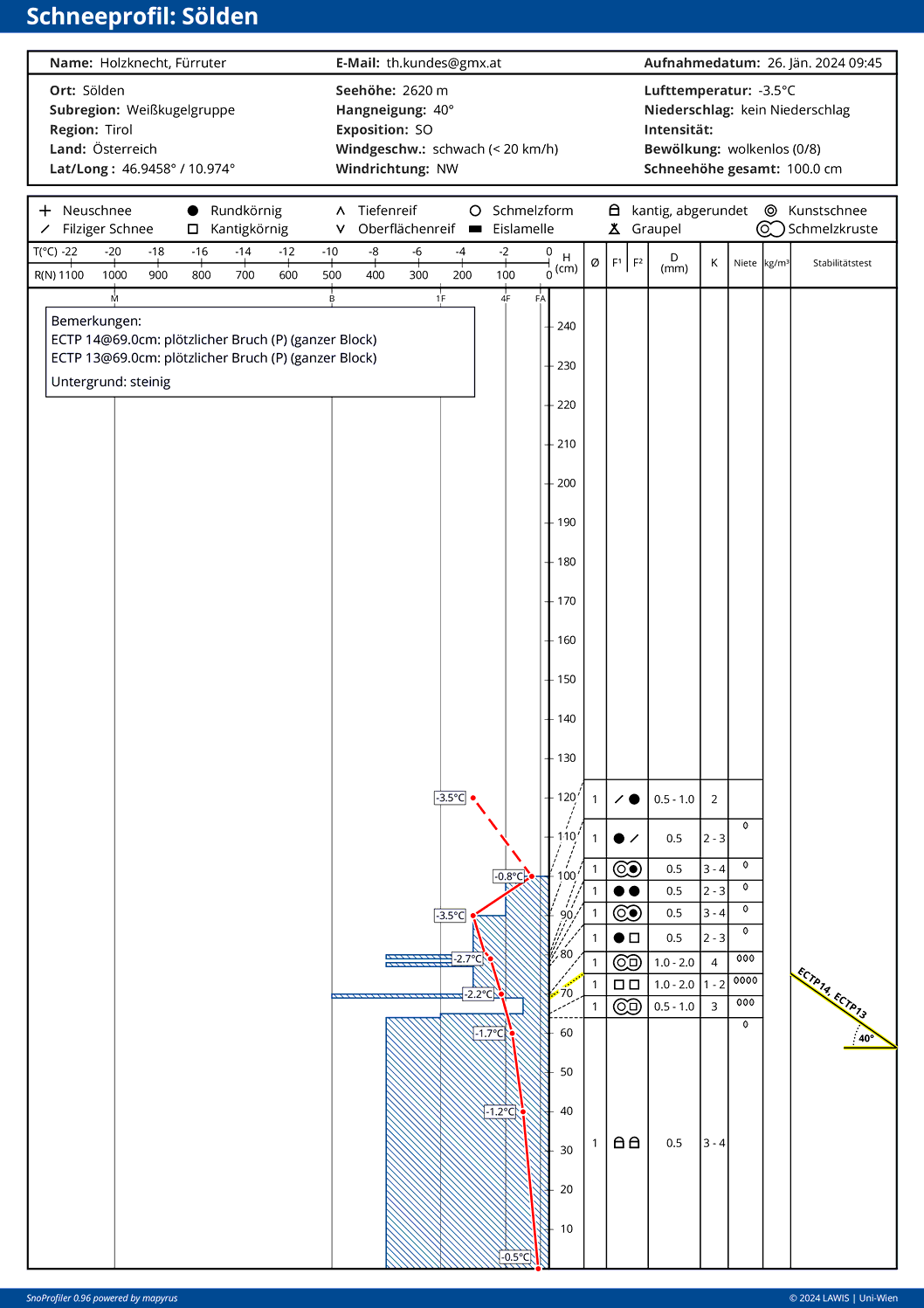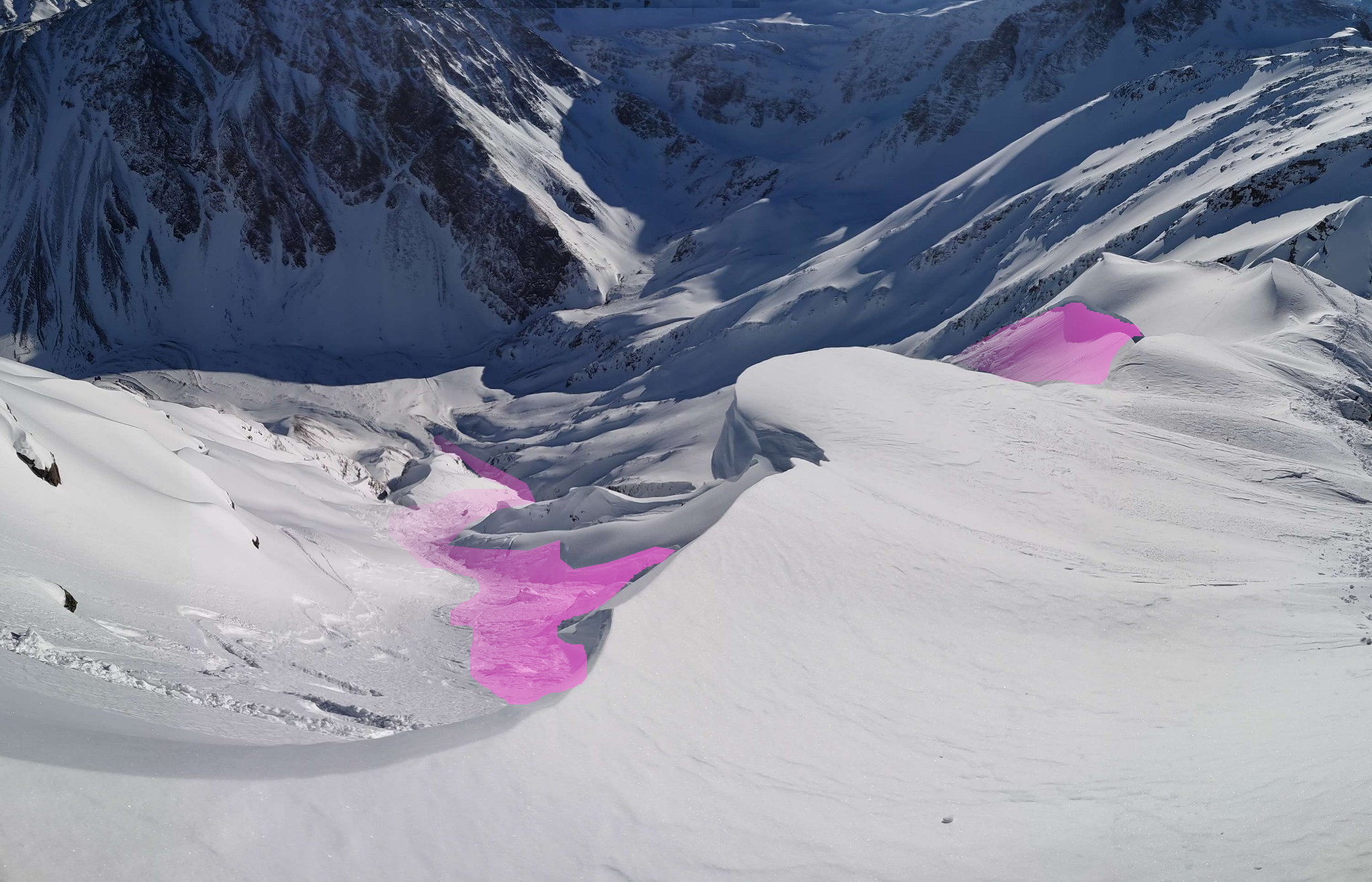The avalanche triggerings and reports from 27.01.2024 corroborate the approaching persistent-weak-layer problem reported in the Blog on 26.01.2024. For that reason we had to update the 27.01 report in the evening and ratchet up the danger level in the relevant regions to considerable. We advise for the moment to circumvent very steep sunny slopes above 2600 m in these regions and wait out the improvement of this problem
Due to a NW weather front and storm-strength winds until 27.01.2024, we knew that the recently formed snowdrift masses were not only widespread at high altitudes, but also prone to triggering. We assumed the main problem was a snowdrift problem, merely viewed the possibility of a persistent weak layer problem. Now we know that in some regions we very definitely have a persistent weak layer problem.

According to latest knowledge, this problem occurs particularly on very steep sunny slopes above 2600 m. Raising the danger level from “moderate” to “considerable” is necessary because the persistent weak layer can trigger large-sized (as opposed to medium-sized) slab avalanches. This is because of the far-reaching areas of a faceted weak layer near a melt-freeze crust which developed as of 09.01.2024.
Several avalanche releases, one of which (Gaiskogel in Sellrain) proved fatal
Several reports of avalanches reached Headquarters Tirol today. On Gaiskogel in Sellrain (Alpein Mountains) a person on an extremely steep east-facing slope at about 2600 m was swept along by a slab and suffered mortal injuries. On Winnebacher Weisserkogel (Alpein Mountains) a slab avalanche triggered at about 2900 m in very steep south-facing terrain when three persons were in their ascent. Near the Kraspesspitze (Alpein Mountains) an avalanche also triggered at about 2900 m. Five persons were on an E/SE facing slope in their ascent. On Hinnter Brunnenkogel in the Weisskugel Massif a freerider was caught while descending in a large-sized slab avalanche. According to latest knowledge, the avalanche fractured at about 3100 m on an extremely steep east-facing slope.

Settling noises and shooting cracks are additional indicators of a persistent-weak-layer problem
On 27.01.2024 there were increasingly frequent reports of shooting cracks and settling noises at high altitudes on sunny, very steep slopes. This is a crystal-clear indicator that the snowpack is “disturbed” and liable to release. To be specific: this is surely a faceted weak layer full of empty spaces which was disturbed by winter sports enthusiasts.

Formula on very steep sunny slopes at high altitudes for the next few days: iron self-restraint
What a pity, we had thought that avalanche danger would soon recede as a result of the supposedly main problem of snowdrifts with short-lived weak layers. Due to the persistent weak layer problem, it is now highly advisable to avoid very steep sunny terrain at high altitudes.
And also: caution is urged on very steep shady slopes in high-alpine terrain near ridgelines. Recently deposited snowdrift accumulations there could still be prone to triggering.
Nevertheless, there are alternatives. Below 2400 m the conditions are increasingly favorable (though you have to keep an eye on possible glide-snow avalanches). On very steep sunny slopes there will soon be firn snow! However, a hard-frozen snowpack surface has acute danger of falls in steep terrain.
